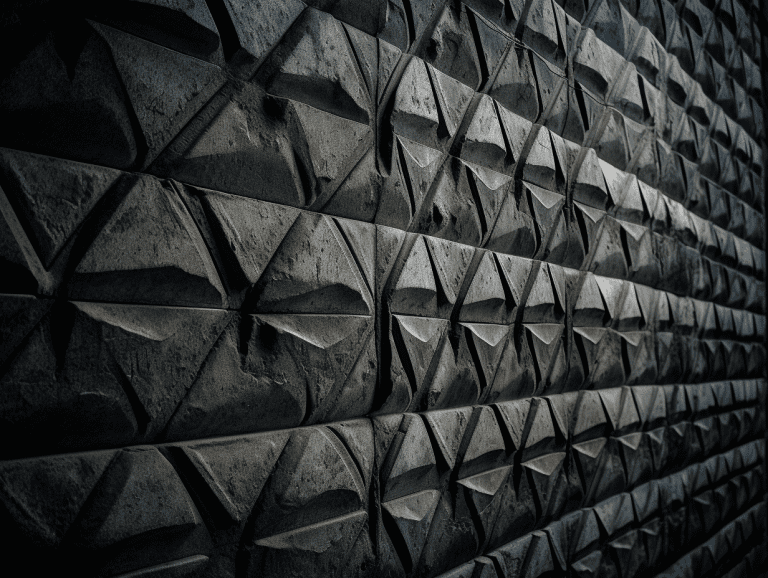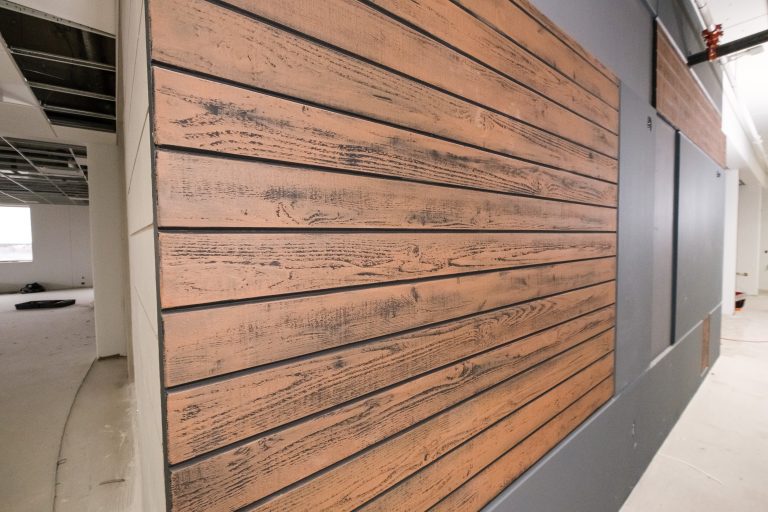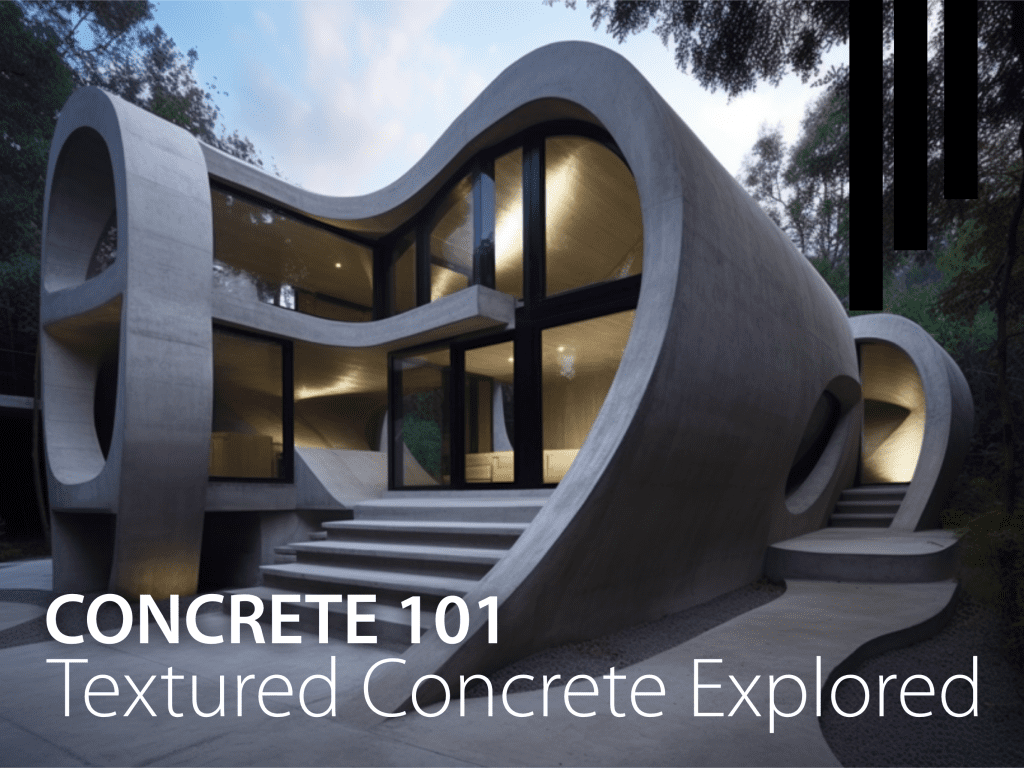Concrete brings to mind gray structures and lifeless parking garages for many people – but odds are, many of the buildings you see and work in each day use beautiful concrete forms in a host of colors and shapes. Have you ever seen concrete with an interesting pattern or texture and wondered, “how did they pull that off?”
Welcome to Concrete 101: Our new blog series on concrete construction, architectural concrete, and ways to beautify the most used building material on earth!
There’s not a moment to waste – let’s dive right into textured concrete and how it can be used in both residential and commercial applications.
Defining Textured Concrete
Concrete is a versatile material that is commonly used in construction, but it doesn’t have to be boring. One way to add visual interest to concrete surfaces is by adding texture.
Textured concrete refers to concrete surfaces that are intentionally altered to create a specific pattern or texture.
There are several methods for creating textured concrete, including stamping, etching, and engraving. Each method produces a different type of texture and can be used to achieve a variety of looks. Here are a few examples!
Stamped Concrete
Stamped concrete is created by pressing a pattern or texture onto wet concrete before it dries. This process creates a surface that resembles brick, stone, or other materials. Stamped concrete is a popular option for outdoor patios, driveways, and walkways.
One of the benefits of stamped concrete is its durability and long-lasting nature. It is also endlessly customizable to match the surrounding landscape or architecture. Stunning architectural finishes can be crafted using what is essentially a large mold, or form liner. We’ll explain form liners a little later on in our series.

Etched Concrete
Etched concrete is created by using a chemical solution to remove the top layer of the concrete surface. This process creates a rough, textured surface that can be customized to create unique patterns and designs.
Etched concrete is often used for interior flooring, countertops, and walls. It can also be used to create custom designs or logos. Etched concrete is a popular choice for those who want a textured surface that is low-maintenance and easy to clean.
Engraved Concrete
Engraved concrete is created by using a specialized tool to carve patterns or designs into the surface of the concrete. This process creates a textured surface that can be customized to create unique designs or patterns.
Engraved concrete is often used for exterior surfaces such as driveways, walkways, and patios. It can also be used for interior flooring, countertops, and walls. Engraved concrete is a popular choice for those who want a durable, long-lasting surface that is easy to maintain.
Concrete in Residential Applications
Textured concrete is a popular choice for residential applications. It can be used for a variety of outdoor surfaces, including patios, walkways, and driveways. Textured concrete can also be used for interior surfaces, such as flooring and countertops.
Textured concrete is also critical for some of the innovative finishes we’re known for here at Nawkaw!
One of the benefits of unique forms of concrete is that they can be customized to create a unique look. This allows homeowners to create a surface that complements their existing landscaping or architecture. Additionally, concrete is a durable, low-maintenance option that can last for many years.
Concrete in Commercial Applications
Textured concrete is all over commercial applications – you just may not have noticed it!
It can be used for a variety of surfaces, including parking lots, walkways, and building facades.
Additionally, well-formed concrete can be customized to create a unique look that complements the surrounding architecture. This empowers commercial buildings to stand out and make a lasting impression on visitors and customers.

Benefits of Textured Concrete
There are several benefits to using textured concrete. One of the biggest advantages is the ability to create a unique and customized look. Textured concrete can be used to mimic the look of other materials, such as stone or brick, but with the added benefits of concrete’s durability and low-maintenance requirements.
Additionally, when used horizontally, concrete often improves the safety of surfaces and out-performs alternative flooring material. That is especially true for outdoor applications.
Textured surfaces can provide better traction, reducing the risk of slips and falls, which is particularly important in areas with heavy foot traffic.
Cost Considerations
The cost of textured concrete varies depending on the type of texture and the application. Stamped concrete is typically more expensive than etched or engraved concrete due to the cost of the stamps and the labor required to create the pattern. However, stamped concrete can be more cost-effective than using traditional paving materials, particularly for larger areas.
Etched and engraved concrete can be more affordable options, particularly for interior applications. However, the cost is typically dependent on the custom designs or patterns chosen.
Final Thoughts
Textured concrete is a versatile and durable option for a variety of residential and commercial applications. Whether you’re looking to create a unique patio or a custom walkway, textured concrete can provide a solution that is both visually appealing and long-lasting.
By understanding the different methods for forming concrete, as well as the benefits and costs associated with it, you can make an informed decision about whether concrete is the right choice for your project.
If you’re interested in learning more about textured concrete or would like to discuss your project with a professional, reach out to us today for a consultation! Nawkaw has over 35 years of experience staining vertical concrete and masonry surfaces. We’ll consult and help you achieve the color and finish of your dreams.

